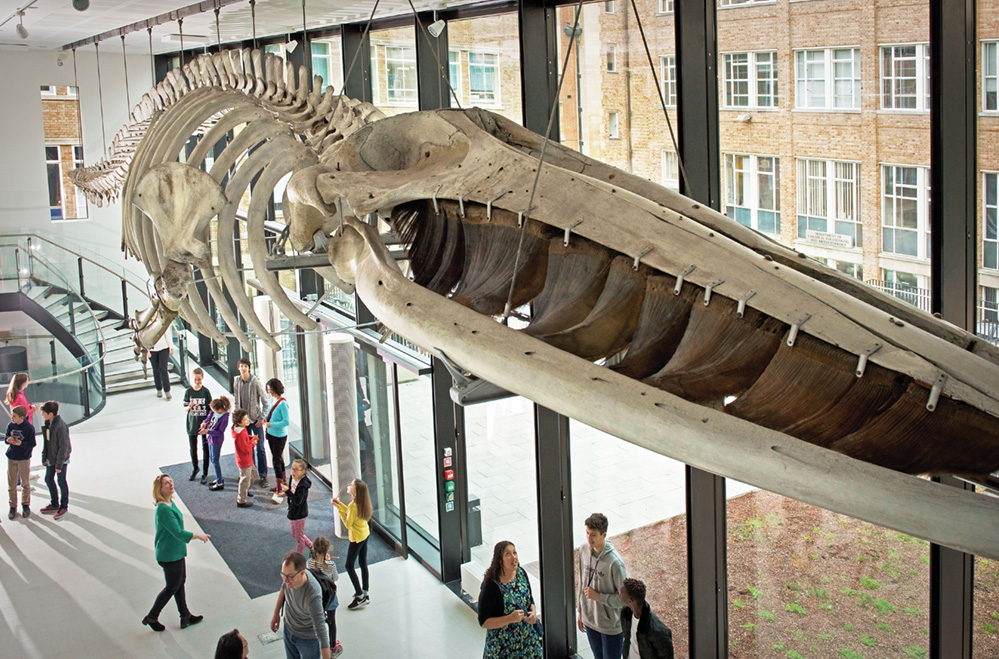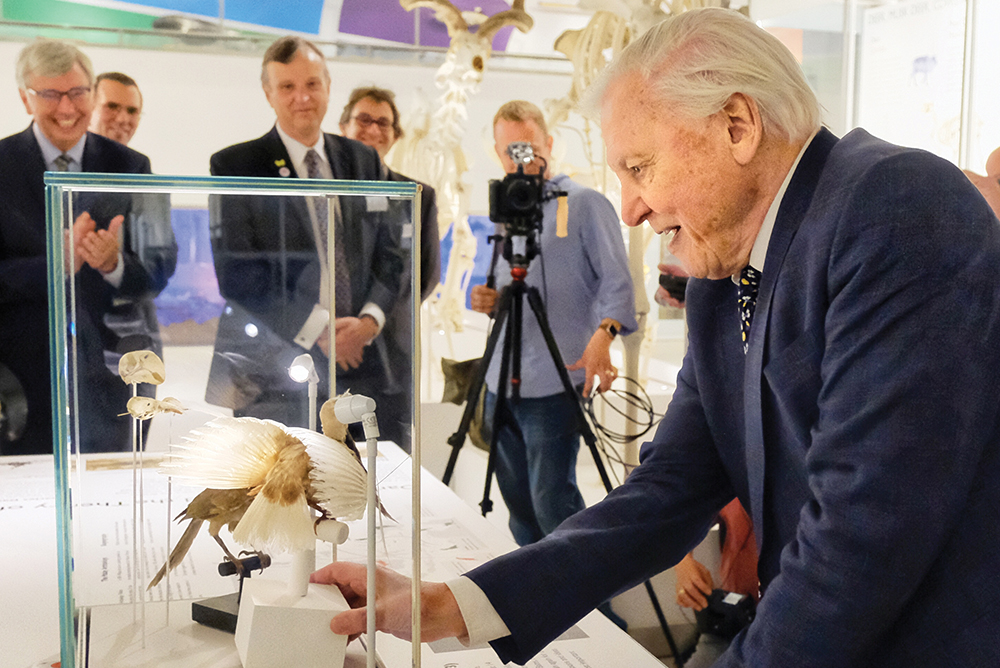Nicola Foley meets a dodo, marvels at Cambridge’ largest resident and explores Darwin’s beetle collection at the Museum of Zoology
When Sir David Attenborough opened the doors to the newly revamped Museum of Zoology in June, Cambridge welcomed back a jewel in its cultural crown. Closed for refurbishment for five years, this cherished local institution dates back to 1814 and is home to one of the largest and most important natural history collections in the country, holding some two million objects and showcasing an awe-inspiring diversity of specimens from across the animal kingdom. The £4.1 million overhaul, in part funded by the National Lottery, includes a cafe, storage facilities and sparkling new galleries, ensuring the treasures of this remarkable collection are preserved for future generations.
Treasures of Land, Sea & Sky 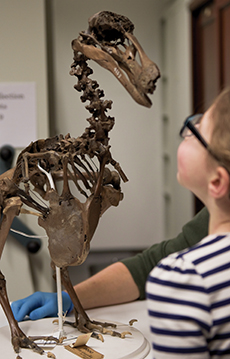
Creatures great and small jostle for visitors’ attention inside, from the fiercest of predators to the most delicate of insects, weaving stories of survival, evolution, extinction and conservation. The most impressive of all, and that which greets visitors as they make their way through the museum’s doors, is the enormous fin whale skeleton. At 21 metres long, it’s among the largest of its kind ever recorded, and fills the entrance hall end to end. After a 22-year stint outside the museum in the open air (to the delight of local pigeons, which happily roosted on it), he was cleaned up, brought inside and suspended in his purpose-built new residence, a process executed with military precision which took a month to complete. Having been washed up on Pevensey Beach in 1865, he’d already been on quite a journey, beginning his afterlife as a curiosity at Hastings cricket ground that punters would pay sixpence to marvel at.
As well as meeting Cambridge’s largest resident, inside you’ll find contributions from history’s most famous naturalists including Charles Darwin, who was an undergrad at Cambridge University. Explore his beetle collection, amassed during his time studying in the city, as well as the preserved fishes that he collected on his voyage on the HMS Beagle – the seminal expedition which gave him much of the evidence for his evolutionary thinking. 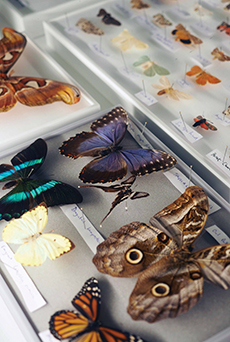
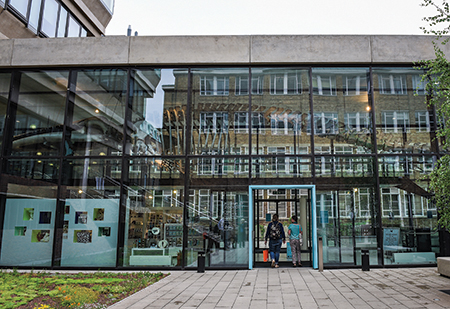
The displays also feature many extinct creatures, including giant mammals like the Diprotodon, a relative of the wombat that weighed in at a whopping 2.5 tonnes. You can also ogle the skeleton of a Giant Ground Sloth, which disappeared around 10,000 years ago when humans arrived in the Americas, and once stood as tall as a giraffe.
The museum holds one of the world’s most complete dodo skeletons too, giving you a chance to get better acquainted with this Mauritius-native bird, learning more about its flightless, ill-fated story. Remnants of other species snubbed out by evolution include the teeth, tusks and hair belonging to that Ice Age superstar, the huge and hirsute Woolly Mammoth.
“This is a place where the public can come to see, study and wonder”
As well as the giants of the animal kingdom, the galleries give an insight into the worlds of the insects, molluscs and other invertebrates that make up the bulk of animal life on earth today. Plus, you can dive into the world inhabited by creatures of the deep sea, meeting a rare Pink Goblin Shark and a Giant Clam, then let your imagination take flight with exotic birds of paradise, admiring their kaleidoscopic plumage.
The collection serves as a reminder that sometimes, evolution throws up surprising oddities. “We have some fish specimens that live their lives with their tails stuck backwards into the anus of a sea cucumber,” says Jack Ashby, the museum’s manager, of one of the more unusual exhibits on display. “The specimens – fish and sea cucumber – have been preserved together in their jars.”
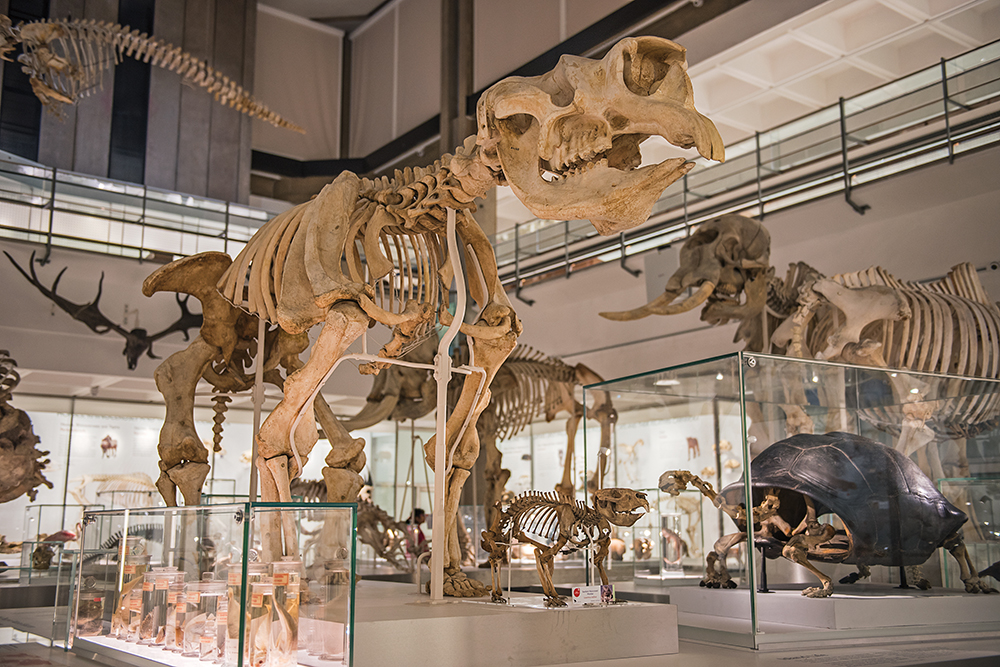
Not all of the museum’s treasures are on display – in fact, only around 1{b486c5a37ab2d325d17e17d701cb2567b1ecd1814e8ceb33effa2a4f1f171d46} is housed in the gallery, the rest stowed away from view in climate-controlled storerooms. The upheaval of this huge collection for the renovation project resulted in remarkable discoveries – including the unearthing of some incredibly rare objects which even the museum’s team didn’t know existed. One such case, an unassuming box of dull brown feathers found lurking behind a wooden cabinet, bore a label reading “Feathers of Moa”. The Moa in question, a group of massive flightless birds native to New Zealand, could stand as tall as three metres, and were hunted to extinction 6-700 years ago by Polynesian settlers.
“Moa feathers are incredibly rare in museum collections worldwide,” enthuses Jack. “Typically only partially fossilised bones are found. The feathers appear to be what they say they are, and we now plan to undertake genetic testing to confirm their identity. If they are proven to be Moa feathers it would represent a significant addition to the global collection, and could help us understand more about these extinct giants.”
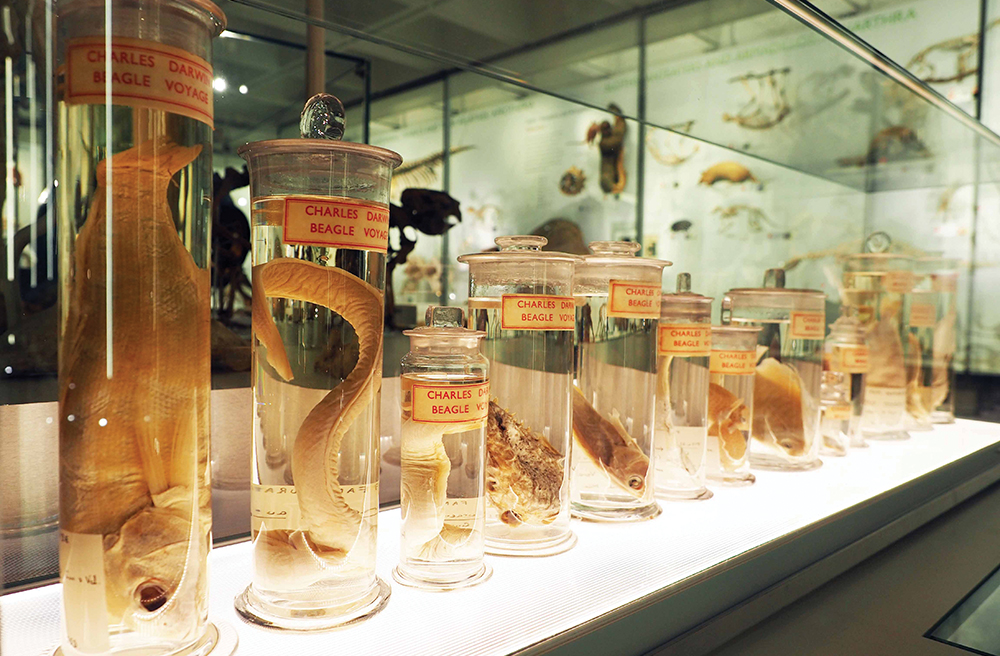
More than cupboards of dead animals
The museum is, emphasises Jack, about much more than just ‘cupboards of dead animals’. In addition to its status as one of the UK’s most significant natural history collections, it also has an important research function behind the scenes. “Unlike any other museum discipline,” he explains, “natural history collections are critically important in helping to answer enormous challenges facing the world, like climate change and biodiversity loss.”
More than that, he says, seeing and learning about zoology can have a real and lasting impact on how we treat our environment. “When people visit museums like ours, which are jammed packed with thousands of incredible, real objects telling the story of life on earth and how we fit into, they can be inspired to feel a connection with the natural world in a way that images on a screen cannot achieve,” he says. “Seeing the scale of the animals up close and how they ‘work’ is an irreplaceable experience… The most important thing is awe and wonder for the natural world.”
